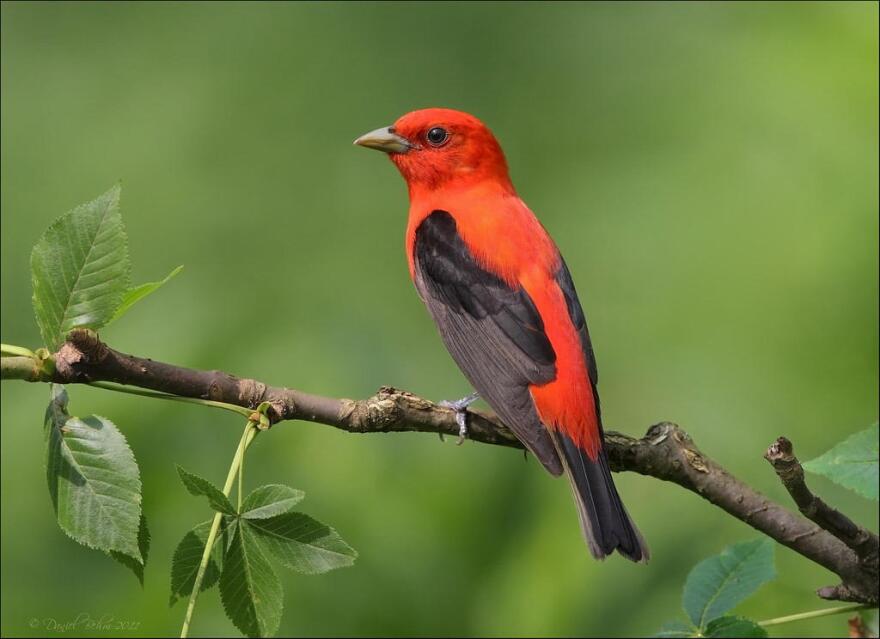Shopping for a jug of maple syrup, you might have noticed a little yellow sticker adorned with a red bird, marking the bottle as “bird friendly.”
It’s a program that grew out of Vermont Audubon a decade ago to encourage sugarmakers to manage their forests with birds in mind. Today, the Bird-Friendly Maple program works with nearly 90 producers in Vermont and others in Maine, New York and Connecticut.
And soon it will expand to several more states, including Pennsylvania, Wisconsin and Minnesota, after the U.S. Department of Agriculture awarded the National Audubon Society $2 million earlier this month.

It’s a big deal for Steve Hagenbuch, a small-scale maple producer at Sweet Bird Farm in Waterbury Center and a biologist at Vermont Audubon who dreamed up the program almost 20 years ago.
“To have the U.S. Forest Service and Inflation Reduction Act funds recognize this as something that's valuable and exciting and really somewhat new in the field of bird conservation is pretty rewarding,” he said.
With the funding, he wants to see if bird-friendly maple could become a true “third-party verified and certified program,” working with groups like the Northeast Organic Farming Association (NOFA) and the Food Alliance.
The money will also help fund social science research about what motivates producers to get involved and consumer marketing to further scale the program.

Sugarbushes make up a big chunk of summer nesting habitat for birds. Over 70 species use Vermont sugarbushes in the summer, from ovenbirds to red-eyed vireos, wood thrush and scarlet tanagers, according to recent research.
“The maple industry really is an important part of forest bird conservation efforts,” Hagenbuch said.
And certain management practices enhance this habitat for birds, like maintaining a diversity of tree species — having at least a quarter of the forest be species other than sugar maple — leaving downed logs and standing snags, and maintaining leaf litter by preventing the spread of invasive earthworms.
The recommendations aren’t a big lift for many sugar makers with forest management plans — like Cori Giroux of Mountainview Mapleworks in Richmond, a small-scale operation with about 1,200 taps. Her sugarbush has been part of the Bird-Friendly Maple program for years after Vermont Audubon originally surveyed their forest.
“We were already doing it, and then it’s nice to have been recognized,” she said.
She labels every jug of her syrup with the bird-friendly stickers, and she has a sign attached to the front of her sugarhouse.
“Any connection we can make between nature and what we’re eating is going to be a plus,” she said.
Have questions, comments or tips? Send us a message.




